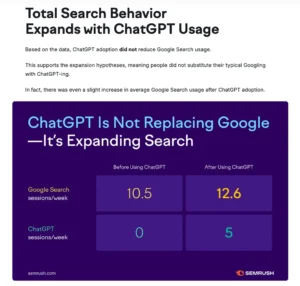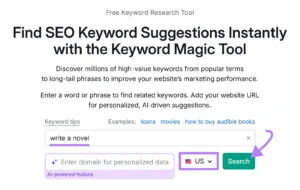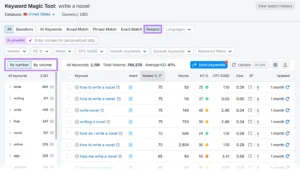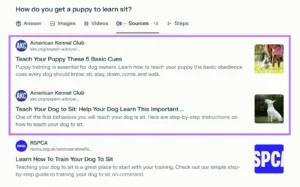What Metehan Yeşilyurt Found About Perplexity’s Ranking System
According to Metehan Yeşilyurt’s analysis, Perplexity doesn’t operate like traditional search engines such as Google or Bing. Instead of relying on backlinks or keyword density, Perplexity focuses on content relevance, clarity, and authority.
His findings suggest that Perplexity’s algorithms prioritize:
-
Expert-level clarity — Content that directly answers questions in a factual, structured way.
-
Credibility — Sources that demonstrate reliability, such as reputable publications or expert voices.
-
Contextual accuracy — Information that aligns well with the user’s intent and the broader topic context.
-
Engagement signals — How often and effectively your content is cited or referenced by AI models or other platforms.
In other words, Perplexity rewards well-structured, evidence-backed, and easily digestible information rather than keyword-stuffed articles.
How Does Perplexity Rank Content?
According to research from Metehan Yeşilyurt, Co-Founder and Chief Growth Officer at AEO Vision, Perplexity uses a three-layer (L3) reranking system when handling searches related to entities such as people, organizations, and places.
Here’s how the process works:
-
Initial retrieval: Perplexity gathers and scores a set of relevant results.
-
Reranking layer: The AI refines these results by analyzing their quality, relevance, and authority.
-
Quality filter: If the results don’t meet Perplexity’s internal quality benchmarks, they can be discarded entirely.
Key Perplexity Ranking Factors
Metehan’s research highlights several important factors that influence how Perplexity ranks and cites content:
-
Freshness matters: Recently published or frequently updated content receives a noticeable ranking boost.
-
Authority domains: Content associated with trusted or pre-approved domains is more likely to be cited.
-
User engagement: Early engagement (clicks, reads, shares) significantly affects future visibility.
Interestingly, Perplexity appears to place greater emphasis on recency and user interaction patterns than Google does.
5 Tips for Creating & Optimizing Content for Perplexity AI
Now that you understand how Perplexity ranks content, let’s explore how to create material that has the best chance of being cited by the platform.
1. Choose High-Performing Topics
Perplexity’s ranking algorithm favors content from high-value categories, meaning some subjects inherently perform better than others. According to Metehan Yeşilyurt’s analysis, “content in top-tier categories receives exponentially more visibility than default topics.”
To improve your chances of discovery and citation, focus on topics Perplexity deems authoritative or insight-driven, such as:
-
Artificial Intelligence (AI)
-
Technology & Innovation
-
Science & Research
-
Business & Analytics
These fields attract the most attention within Perplexity’s ecosystem.

2. Include Semantic Keywords in Your Content
Perplexity’s AI understands context rather than just exact keywords. That means including semantic keywords — words and phrases related to your main topic — can significantly improve your chances of being matched with user queries.
For example, if your article focuses on “email marketing automation,” you could naturally include related terms such as:
-
drip campaigns
-
behavioral triggers
-
lead nurturing
-
conversion funnels
These semantically connected terms help Perplexity’s AI better understand the depth and context of your content.
Best Practices for Using Semantic Keywords:
-
Blend technical and casual language: Use both specific and broad terms (e.g., “content management system” and “website platform”).
-
Cover subtopics naturally: Address related subthemes within your main topic to increase contextual coverage.
-
Build conceptual bridges: Connect your topic to adjacent ideas through clear, explanatory sentences.
-
Use natural Q&A patterns: Write in ways that reflect how real users ask questions (e.g., “How does email automation improve conversion rates?”).
To find the best semantically related terms, tools like Semrush’s Keyword Magic Tool are highly effective. Simply enter your primary keyword, select your target country (optional), and click “Search.” You’ll receive a list of related phrases that can help expand your topic’s reach and relevance.

Click “Related” to find related keywords. And consider using the keyword group filter on the left to drill down to specific topics.

Then, write your content and naturally include your chosen semantic keywords.
The key is natural integration. Keyword stuffing — forcing too many keywords unnaturally into your text — can create awkward phrasing and actually hurt performance.
Instead, write as an expert who naturally uses the right terminology and related phrases. This not only improves readability but also helps Perplexity recognize your authority within the topic.
3. Reference & Get Featured in Content from Perplexity’s Trusted Domains
According to Metehan Yeşilyurt’s research, Perplexity maintains a manually curated list of reputable domains that influence its rankings. Being mentioned by, or linking to, these trusted domains can increase your visibility in Perplexity’s search results.
These trusted domains align closely with established authority within each industry.
For example:
-
Travel: Booking.com, Airbnb
-
Technology: GitHub, Stack Overflow
-
E-commerce: Amazon, Shopify
However, the full list of approved domains isn’t publicly available.
To identify which domains Perplexity favors in your niche:
-
Search for relevant topics on Perplexity.
-
Note which domains appear most frequently in the cited sources.
-
Incorporate relevant references or collaborate with those sources when possible.
SEO consultant Ross Kernez applied this insight for one of his clients and saw dramatic results:
“On a developer-focused website, we began adding GitHub code snippets from popular open-source projects relevant to our topic. Instead of summarizing documentation ourselves, we linked directly to GitHub repos and included related issues or discussions.”
This change tripled the number of times the client’s developer content was featured in Perplexity answers.
Ross also tested the same approach in consumer content:
“For our tech and product review articles, we started adding links to Amazon product pages, customer reviews, and Reddit discussions to support our claims.”
These small but strategic references helped boost engagement and improve visibility across Perplexity’s AI results.
4. Write Compelling Meta Titles & Descriptions
Your meta titles and descriptions play a crucial role in driving engagement — even within Perplexity’s interface.
Because users only see a small snippet (title + short description) when your content appears as a citation, that limited space determines whether they’ll click through.
According to Metehan’s research, early engagement — such as clicks, scrolls, or user time on page — is a key signal that influences future ranking potential.
Best Practices:
-
Keep it concise: Aim for titles under 60 characters and descriptions under 155.
-
Incorporate action verbs: Use engaging phrasing like “Discover,” “Explore,” “Learn,” or “Uncover.”
-
Include your main keyword naturally.
-
Emphasize value: Highlight what makes your content unique or data-backed.

Make sure your titles include your primary keyword and clearly reflect the topic of your content. Readers should understand exactly what your page offers just by reading the title alone.
Your meta descriptions should provide a concise preview of your content — highlighting what users will learn or gain by clicking through from Perplexity. Think of them as your content’s elevator pitch: short, compelling, and informative.
5. Build Topical Authority
Perplexity appears to reward websites that demonstrate comprehensive expertise within a specific subject area. This means covering multiple angles of a topic — rather than publishing one-off articles — can significantly improve your chances of ranking higher.
Unlike traditional search engines that often evaluate pages individually, Perplexity assesses how your content connects to related articles and the overall depth of knowledge your site conveys.
Example in Action:
When a user searches for “how to train a puppy to sit,” Perplexity frequently cites multiple pages from the American Kennel Club.
Why? Because the site has built a robust library of interconnected articles on dog training — covering commands, behavior techniques, and puppy development — which collectively signals strong topical authority.
To build this same level of authority:
-
Create clusters of related content. Cover every subtopic under your main theme.
-
Interlink strategically. Connect related posts through internal links that help Perplexity understand topic relationships.
-
Keep content fresh. Update and expand older articles to reflect new insights or data.
-
Cite trusted sources. Reference reputable domains to reinforce credibility and depth.
By establishing yourself as a recognized authority in your niche, you not only improve visibility within Perplexity’s ecosystem but also strengthen your brand’s reputation across AI-driven platforms in general.

Use Semrush’s Keyword Strategy Builder to Plan Topic Clusters
Semrush’s Keyword Strategy Builder can automatically create pillar pages and subpages for you — helping you structure your content around themes that Perplexity’s AI is more likely to recognize and cite.
After entering a few seed keywords (your main topics), the tool generates:
-
Pillar pages — your broad, high-level topics
-
Subpages — specific, related subjects that support and link back to the pillar
For example, if your main topic is “Healthy Eating,” the builder might suggest subpages like “Meal Planning,” “Nutrient Timing,” and “Healthy Recipes.”
By creating content around these interconnected topics — and linking them internally — you can strengthen your topical authority and increase your chances of being cited within Perplexity.
Measure Success in Perplexity and Adapt
Tracking how your content performs on Perplexity helps you understand which strategies are working — and where to improve.
Here’s how to do it using Semrush’s AI SEO Toolkit:
-
Open the Narrative Drivers tool
Enter your domain and click “Analyze.” -
Select “Perplexity” in the dropdown
You’ll see how many mentions your site has compared to your top competitors.
(You can also add or remove competitors to refine your comparison.) -
Review the “AI Strategic Opportunities” section
This section provides personalized recommendations for improving your citations and overall Perplexity visibility.
By applying these insights — along with the optimization strategies outlined in this article — you can continuously improve your content’s performance within Perplexity’s ecosystem.
Final Thoughts
Perplexity is reshaping how AI-driven search discovers and ranks content. Its emphasis on freshness, authority, and user engagement means traditional SEO tactics aren’t enough.
By focusing on semantic relevance, topical authority, and trusted domain connections, you can position your content to stand out — not only to users but also to Perplexity’s advanced AI systems.
Ready to optimize for Perplexity?
Start experimenting with Semrush’s AI SEO Toolkit today and take the first step toward earning consistent citations across AI-powered search platforms.